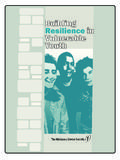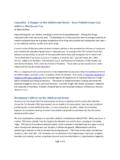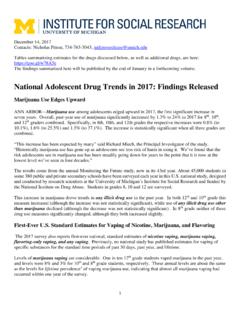Transcription of Early alcohol and marijuana use among 16 to 18 year old BC ...
1 What a difference a year can make: McCreary Centre SocietyEarly alcohol and marijuana use among16 to 18 year old BC studentsA report of the 2008 British Columbia Adolescent Health SurveyWhat a difference a year can make: Early alcohol and marijuana use among 16 to 18 year old BC studentsCopyright: McCreary Centre Society, 2010 ISBN: 978-1-926675-06-0 McCreary Centre Society3552 Hastings Street EastVancouver, BC V5K enquiries or to order copies of the report, please McCreary Centre Society is a non-government not-for-profit organization committed to improving the health of BC youth through research, education and community based projects. Founded in 1977, the Society sponsors and promotes a wide range of activities and research to identify and address the health needs of young people in the report of the 2008 British Columbia Adolescent Health SurveyFunding for this report was provided by the Ministry of Healthy Living and for the BC Adolescent Health Survey was provided by the Province of British Columbia, Ministry of Children and Family Development; Child Health BC; Northern Health Authority; and Centre for Addictions Research BC, University of Victoria.
2 The McCreary Centre Society thanks the Inter-Ministerial Advisory Committee, participants in the AHS Institute advisory meetings, Public Health Nurses who administered the survey and participating school districts, principals and thanks are also due to the youth who completed the survey, and whose participation, honesty and thoughtful insights are greatly Team Annie SmithExecutive DirectorElizabeth SaewycResearch DirectorDuncan StewartResearch AssociateColleen PoonResearch Associate Maya PeledResearch AssociateChiaki KonishiResearch AssociateCarly HoogeveenResearch AssistantStephanie MartinYouth Participation CoordinatorTamar PeledGraphic DesignerSuggested citation: Smith, A.
3 , Stewart, D., Poon, C., Saewyc, E. and the McCreary Centre Society (2010). What a difference a year can make: Early alcohol and marijuana use among 16 to 18 year old BC stu-dents. Vancouver, BC: McCreary Centre of contentsKey findings 4 Introduction 6 alcohol & marijuana use 9 Early use & recent use 12 Early use & high risk use 15 Medicinal use of marijuana 17 Early use & other substance use 18 Youth at higher risk for Early alcohol & marijuana use 20 Health risks & Early use 26 Direct consequences of substance use 34 Early use of both alcohol & marijuana 35 Earliest use 37 Early users who had not used recently 39 Youth who had never used alcohol or marijuana 41 Protective factors associated with delayed use 44 Summary 47 McCreary resources 48 What a difference a year can make.
4 Early alcohol and marijuana use among 16 to 18 year old BC students4 Key findingsThe fourth BC Adolescent Health Survey was completed by over 29,000 youth in 1,760 classrooms across British Columbia between February and June of 2008. An in-depth analysis of the data provided by students who were 16 to 18 years old when they took the survey shows the effects of Early alcohol and marijuana use on youth health:The use of alcohol and marijuana among BC youth declined substantially over the past decade; however, alcohol remains the most popular substance. Seventy-five per-cent of 16 to 18 year olds had tried alcohol and 46% had tried marijuana . Youth who had tried alcohol or marijuana waited longer to do so.
5 For example, the percentage of 16 to 18 year olds who first drank at 12 years old or younger declined between 1998 and 2008. Male and female students were equally likely to have tried alcohol or marijuana , but males were more likely to have tried these substances before they were 13 years old (24% of males vs. 17% of females had tried alcohol by this age).The older youth were when they started using alcohol or marijuana , the less likely they were to be current users or to engage in risky use, such as mixing different types of alcohol , drinking at high risk levels or using marijuana last Saturday. Youth who first used alcohol or marijuana at age 12 or younger were more likely to engage in a range of other health risk behaviours, such as cigarette smoking, using other substances and driving under the factors for earlier use of alcohol or marijuana included a history of physical or sexual abuse, a limiting physical or mental health condition or disability and a family history of suicide attempts.
6 Youth with higher levels of protective factors, such as meaningful community engagement, family connectedness and friends with healthy attitudes about risky behaviours, were more likely to wait until they were 15 years old to try alcohol and marijuana than youth with lower levels of protective same protective factors worked for both males and females against Early marijuana use but there were gender dif-ferences in the protective factors linked to delaying alcohol use. For example, cultural connectedness and involvement in organized sports were only protective for youth may be using marijuana to manage physical symptoms. Youth with a chronic health condition or disability were not only more likely to be earlier marijuana users but were also more likely to be current heavy Centre Society 5 Youth who had never tried alcohol or mari- juana were less likely than those who had tried them to report risk behaviours such as fighting, gambling and skipping school.
7 Youth who had never tried marijuana also reported better emotional health than those who had tried it at any the use of alcohol and marijuana by even a couple of years improved health outcomes for youth. For example, com-pared to youth who started drinking at 8 years old or younger, youth who started drinking at 11 or 12 were less likely to have tried other drugs such as amphetamines or crystal meth, or to have injected earlier users of alcohol and marijuana were more likely to ask a variety of professionals for help than those who started using these substances later, they were less likely to find these professionals helpful. This may potentially contribute to why they were also less likely than their peers to get needed medical among earlier users, avoiding recent alcohol or marijuana use had benefits.
8 These youth reported lower rates of health risk behaviours and higher rates of health promoting behaviours (such as seat belt use) than their peers who started earlier and continued to use. What a difference a year can make: Early alcohol and marijuana use among 16 to 18 year old BC students6 IntroductionStarting to experiment with alcohol during adolescence is normative among BC youth. marijuana use is also common. However, the timing of first use can make a difference to current and future health. The use of alcohol and marijuana from an Early age has been linked to problematic substance use. For example, there is an increased likelihood of problem drinking (including dependence), alcohol -related violence, and drinking and driving among adults who started using alcohol before they were 12 years of age.
9 Early alcohol and marijuana use has also been asso-ciated with a range of other health and social problems. marijuana use before the age of 16 has been linked to mental health problems, Early sexual activity, unemployment and criminal justice Early substance use can lead to other problems, it is important for policy makers, educators, youth support workers, health professionals and parents to identify the risk and protective factors for Early substance report focuses on BC youth aged 16 to 18, primarily comparing the health profile and risk and protective factors among those who started using alcohol and marijuana at an earlier age, those who waited longer before using these substances, and those who had not yet tried them.
10 About the report The report is based on the responses of over 10,000 youth aged 16 to 18, who were among the 29,440 students in Grades 7 through 12 that completed the McCreary Centre Soci-ety 2008 BC Adolescent Health Survey. The survey was delivered in 1,760 classrooms in 50 of BC s 59 school districts between February and June of 2008. Only the data provided by those youth who were aged 16 to 18 when they took the survey was used. This allows us to compare the health and experiences of young people who had used alcohol and marijuana from an earlier age, with those who had not yet tried these substances or who had waited until they were older to do AHS was completed by a small number of 19 year olds.










